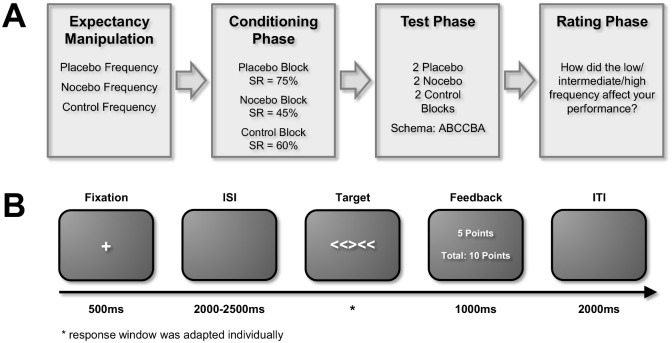Fig 1.
A. Study design. The study started with an expectancy manipulation: Participants were first informed about the effects of “frequency stimulation” and heard three different tone frequencies allegedly designed to either improve, impair, or not affect cognitive functioning (placebo, nocebo, and control frequencies). They then underwent a conditioning phase with fixed success rates to strengthen their expectations, followed by the actual test phase without any additional manipulations pertaining to success rates. In the subsequent rating phase, participants evaluated how the frequencies affected their performance. B. Trial procedure of the Flanker task. This trial procedure was used during conditioning and to assess cognitive performance during test. Participants first saw a fixation cross on the screen followed by a variable inter-stimulus interval (ISI). Then the actual target appeared; participants were asked to respond with a left or right arrow key press when the middle arrowhead pointed to the left or right, respectively. The response window for this task was adapted individually. If participants responded correctly and in time, they gained 5 points per trial, if not they didn’t gain any points; this information was presented to them together with the total number of points they had gained during the respective block.

